| Our dynamic
attendants sharing the last moments of the TPS Symposium, Quito 2005
Credits: Runajambi
|
 |
| The two
first pictures are of high resolution, ideal for printing (the files are of
about 260 kb)
Credits: Runajambi
|
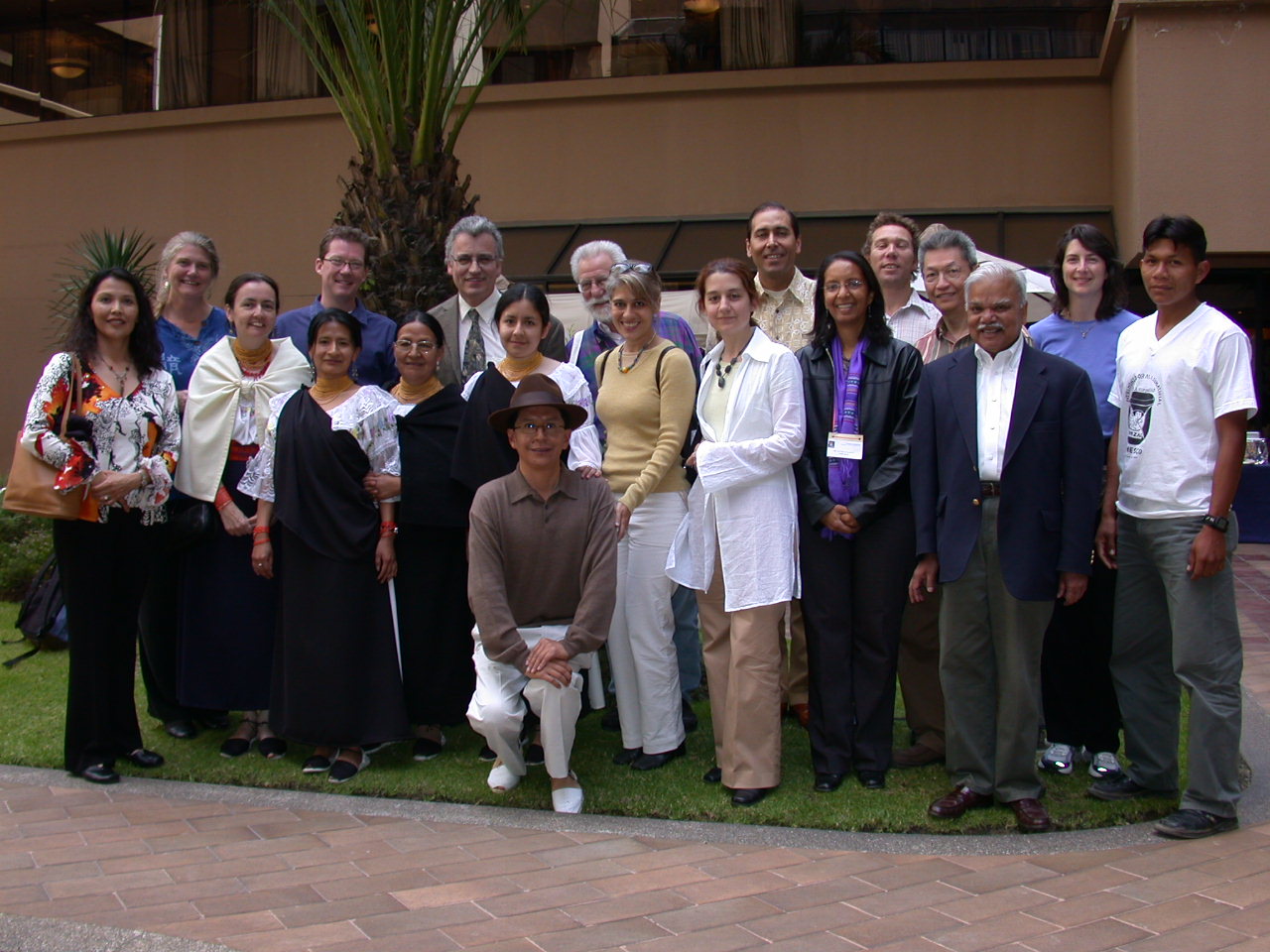 |
| Local
organizers:
Sioui Maldonado Bouchard
Mario Incayawar
Gina Maldonado
Luz Marķa Ruiz
Lise Bouchard
Credits: Dr. Ron Wintrob |
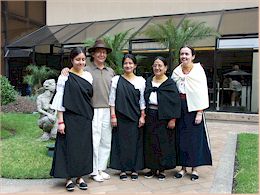 |
| Gina Maldonado
presenting data on the indigenous people of Ecuador
Credits: Runajambi
|
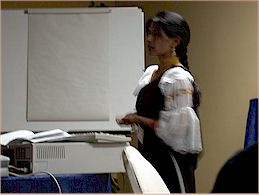 |
| Yachac Jose Manuel
Cordova performing a cleansing ceremony
Credits: Runajambi
|
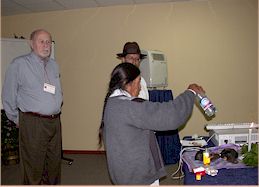 |
| Dr. Gimbrere
volunteering for a healing session
Credits: Runajambi |
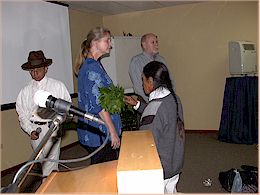 |
| Dr. Varma actively
participating in the meeting.
Credits: Runajambi |
 |
| Dr. Obiols
highlighting a point.
Credits: Runajambi |
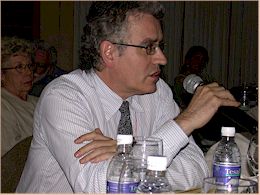 |
| Dr. Mkize sharing
about the South African leading experience.
Credits: Runajambi |
 |
| Dr. Wintrob and Dr.
Mkize exchanging ideas about healers and psychiatrists'
collaboration
Credits: Runajambi |
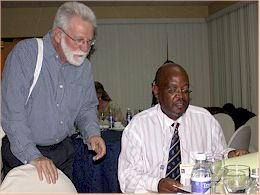 |
| From left to right,
Dr. Daniels, Dr. Mkize, Dr. Nez Henderson, Dr. Henderson and Dr.
Incayawar, at coffee break.
Credits: Runajambi |
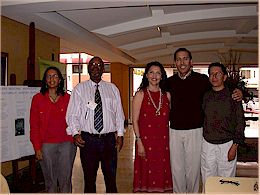 |
| Dr. Varma talking
about traditional versus formal approaches to doctor-patient
relationships.
Credits: Runajambi |
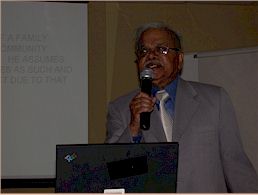 |
| Dr. Snider's
touching presentation on trauma recovery in post-war Africa using
traditional healing.
Credits: Runajambi |
 |
| Sioui and Gina hard
at work solving a technical problem.
Credits: Runajambi |
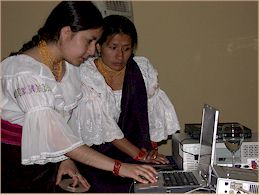 |
| Sioui Maldonado
Bouchard presenting a poster on intellectual property rights and
culturally-adapted patents' criteria.
Credits: Runajambi |
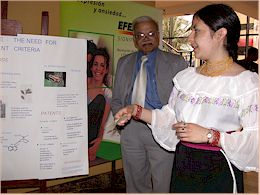 |
| Dr. Whan captivating
the attention of the audience.
Credits: Runajambi |
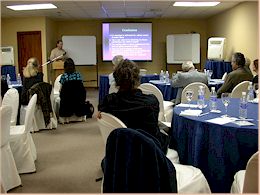 |
| Dr. Wintrob
presenting his research on biculturalism.
Credits: Runajambi |
 |
| Dr. Incayawar
presenting his arguments on why indigenous healers should collaborate
with psychiatrists.
Credits: Runajambi |
 |
| Enjoying the
beautiful colonial architecture of San Lazaro Psychiatric Hospital in
Old Quito.
Credits: Runajambi |
 |
| Zaparo healer
Joaquin Ushiua performing a healing session on Dr. Lo
Credits: Runajambi |
 |
|
Plaza de la Independencia and
House of Central Government
Credits: Runajambi
|
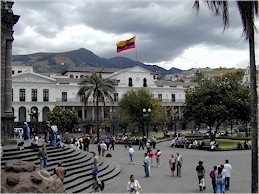 |
| The Old Quito
Credits: Runajambi
|
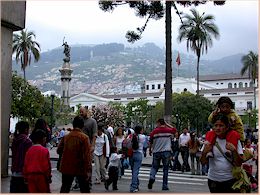 |
| Colourful colonial
buildings
Credits: Runajambi
|
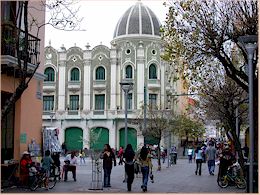 |
| Carriage tours
Credits: Runajambi
|
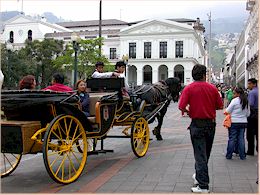 |
| People can enjoy the
old Quito on Saturdays and Sundays. Cars are not allowed on
weekends
Credits: Runajambi
|
 |
| Convenient and well
organized trolley service allows one to visit almost the entire city
Credits: Runajambi
|
 |
Colourful
colonial buildings
Credits: Runajambi
|
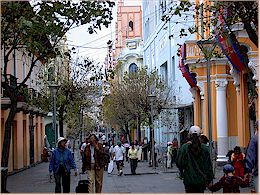 |
| Colourful colonial
buildings
Credits: Runajambi
|
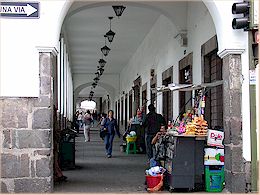 |
| Colonial houses and
narrow streets are everywhere in Quito
Credits: Runajambi
|
 |
| Sloped streets are
challenging for people and cars
Credits: Runajambi
|
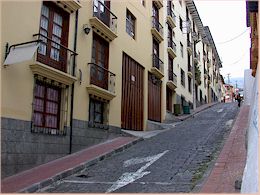 |
| Sloped streets are
challenging for people and cars
Credits: Runajambi
|
 |
| Credits:
Runajambi |
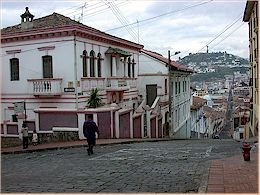 |
| Just 20 miles from
Quito there are gorgeus valleys. They provide produces to
the city
Credits: Runajambi
|
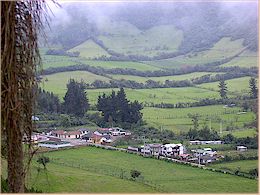 |
|
Imbabura Montain and San Pablo
Lake
Credits: Runajambi
|
 |
| |
|
|
Cuicocha Lake
Credits: Runajambi
|
 |
| Northern side of the
city
Credits: Runajambi
|
 |
| The modern Quito
Credits: Runajambi
|
 |
| Parasailing the
skies of Quito
Credits: Runajambi
|
 |
| Parasailing has
become a new sport of nationals and foreigners
Credits: Runajambi
|
 |
| Quito's beautiful
night sight
Credits: Runajambi
|
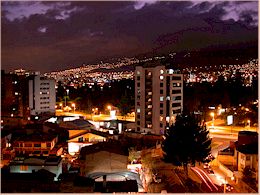 |